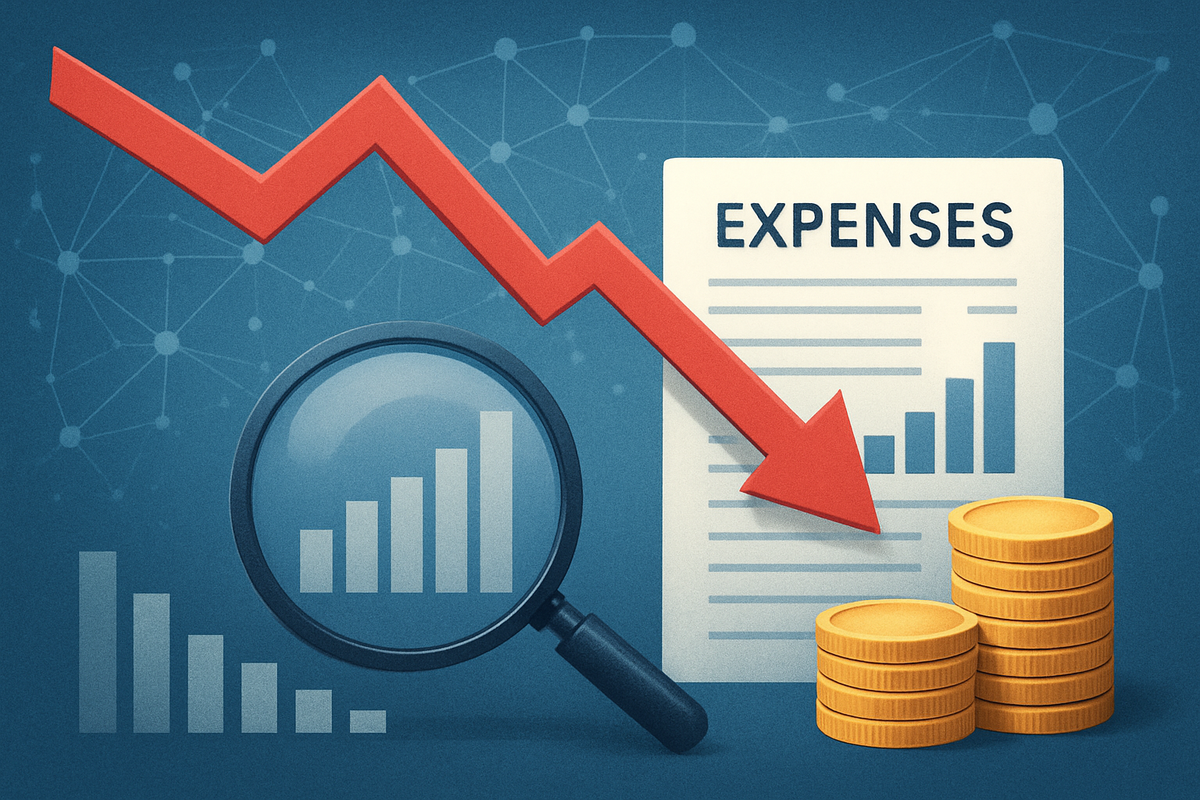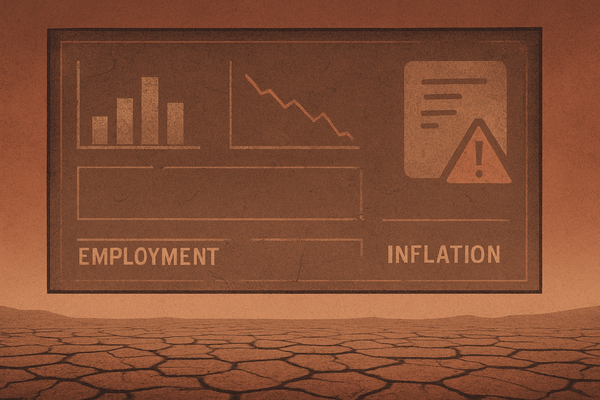Circle Stock Tumbles as Increased Spending Outlook Spooks Investors Despite Strong Q3 Performance

New York, NY – November 12, 2025 – Circle Internet Group (NYSE: CRCL) saw its stock plummet today following its Third Quarter (Q3) 2025 earnings report, despite the stablecoin issuer posting robust revenue and profit figures. The significant decline, which saw shares close down 5.57% on Wednesday and continue to fall in pre-market trading on Thursday, November 13, 2025, was primarily triggered by the company's updated guidance for its 2025 adjusted operating expenses, signaling higher costs than previously anticipated and raising concerns among investors about future profitability and margin compression.
This market reaction underscores a growing investor sensitivity to growth-at-any-cost strategies, particularly within the volatile fintech and cryptocurrency sectors. While Circle's strong top-line growth and impressive year-over-year improvements in key metrics initially painted a positive picture, the forward-looking statement regarding increased operational outlays quickly overshadowed these gains, prompting a reassessment of the company's financial trajectory and long-term valuation.
Unpacking Circle's Q3 2025 Report and Market Fallout
Circle's Q3 2025 earnings report, released on Wednesday, November 12, 2025, presented a mixed bag of impressive current performance juxtaposed with a cautious future outlook. The company reported total revenue and reserve income of $740 million, a substantial 66% year-over-year (YOY) increase that comfortably surpassed analyst estimates. Furthermore, Circle posted a GAAP Earnings Per Share (EPS) of $0.64, significantly outperforming expectations and achieving a net income of $214 million, a 202% YOY improvement. Adjusted EBITDA also surged by 78% YOY to $166 million, with an adjusted EBITDA margin of 57%. The average USDC in circulation nearly doubled YOY, reaching $73.7 billion, and on-chain transaction volume for USDC soared by an astounding 680% annually to $9.6 trillion.
Despite these stellar figures, the market's focus quickly shifted to Circle's revised guidance for its 2025 adjusted operating expenses. The company increased its forecast to a range of $495 million to $510 million, up from the previously projected $475 million to $490 million. This upward revision was attributed to "growing investment in building our platform, capabilities and global partnerships to meet the accelerating market interest and opportunity, as well as higher payroll taxes anticipated from option exercises." A notable portion of this increased spending is specifically earmarked for the development of Arc, Circle's ambitious upcoming blockchain project.
The immediate market reaction was swift and negative. Shares of Circle (NYSE: CRCL) began their descent on Wednesday, November 12, 2025, and continued to fall by more than 5% in pre-market trading on Thursday, November 13, 2025. Analysts were quick to voice concerns, with U.S. Tiger Securities analyst Bo Pei highlighting that Circle's revised annual gross margin outlook of 38% implied a weaker fourth quarter. JPMorgan Chase & Co. (NYSE: JPM) maintained a "Sell" rating on the stock, citing persistent valuation concerns. This collective apprehension signals that while growth is desirable, investors are increasingly scrutinizing the cost of that growth and its potential impact on future profitability.
Potential Winners and Losers in the Wake of Circle's Report
Circle's revised outlook and subsequent stock tumble could have ripple effects across the fintech and crypto landscapes, creating both winners and losers.
Potential Losers:
- Circle (NYSE: CRCL): The most immediate loser is Circle itself. While the company is investing in long-term growth initiatives like the Arc blockchain, the short-term market reaction indicates a loss of investor confidence in its immediate profitability trajectory. Sustained investor skepticism could impact its ability to raise capital at favorable valuations in the future and potentially slow down its ambitious expansion plans if it needs to conserve cash.
- USDC Holders and Ecosystem Partners (Short-term): While USDC remains a robust stablecoin, any perception of financial instability or profitability challenges for its issuer, Circle, could briefly unnerve some holders or partners within the USDC ecosystem. Though unlikely to cause a run, it might lead to increased scrutiny.
- High-Growth, High-Spend Fintechs: Circle's experience could serve as a cautionary tale for other high-growth fintech companies that are heavily investing in expansion without a clear, near-term path to sustainable profitability. Investors might become more discerning, demanding clearer expense management strategies and quicker returns on investment.
Potential Winners:
- Competitors in the Stablecoin Market: Rivals such as Tether (USDT), Paxos (BUSD, USDP), and even newer entrants backed by traditional financial institutions, could potentially benefit. If Circle faces sustained pressure or perceived profitability issues, some market share could shift to competitors seen as more financially stable or having a clearer path to profitability. This is especially true for stablecoins issued by well-established financial players like JPMorgan's (NYSE: JPM) JPM Coin or potentially future offerings from other large banks.
- Blockchain Infrastructure Providers (Indirectly): Companies that provide underlying blockchain infrastructure, development tools, or consulting services for projects like Arc might see continued demand. Circle's commitment to building out Arc, despite cost concerns, indicates a belief in the long-term value of blockchain innovation, which could benefit companies like Coinbase Global Inc. (NASDAQ: COIN) that offer various crypto services or other blockchain development firms.
- Traditional Financial Institutions: As regulatory scrutiny on crypto firms intensifies (as seen with the "Genius Act"), traditional financial institutions that are slowly entering the digital asset space might be viewed as safer, more compliant alternatives. A stumble by a pure-play crypto firm like Circle could subtly reinforce the perceived stability of traditional finance.
Wider Significance: A Bellwether for Fintech and Crypto's Maturation
Circle's stock performance post-earnings is more than just a company-specific event; it serves as a significant bellwether for the broader fintech and cryptocurrency markets, indicating a maturing investment landscape. This event highlights a critical shift in investor sentiment from prioritizing sheer growth at any cost to demanding a clearer path to profitability and sustainable financial models, even for innovative companies operating in nascent sectors.
This development fits squarely into the broader industry trend of increasing scrutiny on crypto companies' financials, especially as the sector moves past its initial speculative phase. The significant investment in the Arc blockchain project, while forward-looking, comes at a time when regulatory bodies are tightening their grip. The recent enactment of the "Genius Act" for stablecoin regulation, for instance, places greater compliance burdens and capital requirements on issuers like Circle. This regulatory environment inherently drives up operating costs and demands more robust internal controls, directly impacting profitability. The market's reaction suggests that investors are factoring in these rising regulatory compliance costs as a permanent fixture, rather than a temporary hurdle.
Potential ripple effects on competitors and partners are also considerable. Other stablecoin issuers and crypto platforms may face increased pressure to demonstrate leaner operations and a clearer path to profitability to maintain investor confidence. Partnerships that rely heavily on Circle's financial strength or future growth potential might also be re-evaluated. Historically, similar events in rapidly expanding tech sectors have often led to a "flight to quality," where investors gravitate towards companies with stronger balance sheets and more predictable earnings. This could accelerate consolidation within the stablecoin market, favoring well-capitalized players or those with diverse revenue streams beyond just stablecoin issuance.
What Comes Next: Navigating Growth and Profitability
In the short term, Circle will likely face continued pressure to articulate a clearer strategy for managing its increased operating expenses and demonstrating a tangible return on its significant investment in the Arc blockchain. The company may need to provide more granular detail on how these investments will translate into future revenue growth and improved margins to reassure skeptical investors. Market analysts will be closely watching for any signs of cost optimization or strategic adjustments in upcoming quarters.
Longer term, Circle's ability to successfully launch and monetize the Arc blockchain will be critical. If Arc delivers on its promise of expanding USDC's utility and adoption in new markets or use cases, the increased investment could eventually pay off, justifying the current expense growth. However, failure to achieve significant traction or generate substantial new revenue streams from Arc could exacerbate profitability concerns. This period will demand strategic pivots, potentially including re-evaluating the scope of certain projects, optimizing operational efficiencies, or even exploring new revenue models beyond traditional stablecoin issuance and reserve management.
Market opportunities or challenges will emerge depending on how Circle navigates this period. A successful execution of the Arc strategy could solidify its position as a leading innovator in the digital currency space, attracting new users and partners. Conversely, continued struggles with profitability could open doors for competitors to gain market share or for new, more capital-efficient stablecoin models to emerge. Potential scenarios range from Circle successfully demonstrating the value of its investments and regaining investor confidence, to a more challenging path where it might need to scale back ambitions or seek further capital at less favorable terms.
A Comprehensive Wrap-Up: Balancing Innovation with Fiscal Prudence
Circle's stock tumble, despite a strong Q3 2025 performance, serves as a pivotal moment for the company and a significant indicator for the broader fintech and crypto markets. The key takeaway is a clear message from investors: while innovation and growth are highly valued, they must be accompanied by a credible and transparent path to sustainable profitability and disciplined expense management. The market is maturing, and the tolerance for "growth at any cost" is diminishing, especially in the face of increasing regulatory oversight and competition.
Moving forward, the market will assess Circle's ability to balance its ambitious growth initiatives, particularly the Arc blockchain, with fiscal prudence. Investors will be scrutinizing future earnings reports not just for revenue growth, but for improvements in operating margins and a clear return on investment from its substantial capital expenditures. The long-term significance of this event lies in its potential to reshape investment strategies within the digital asset space, pushing companies towards more sustainable business models.
Investors should closely watch several key areas in the coming months: Circle's updated guidance on operating expenses and gross margins, the progress and adoption of the Arc blockchain, and any strategic announcements regarding cost-cutting measures or new revenue streams. Furthermore, the evolving regulatory landscape, especially the implementation and enforcement of stablecoin regulations like the "Genius Act," will continue to play a crucial role in shaping the operational costs and market opportunities for Circle and its peers. The era of unbridled crypto speculation is giving way to one demanding financial discipline and clear value propositions.
This content is intended for informational purposes only and is not financial advice



